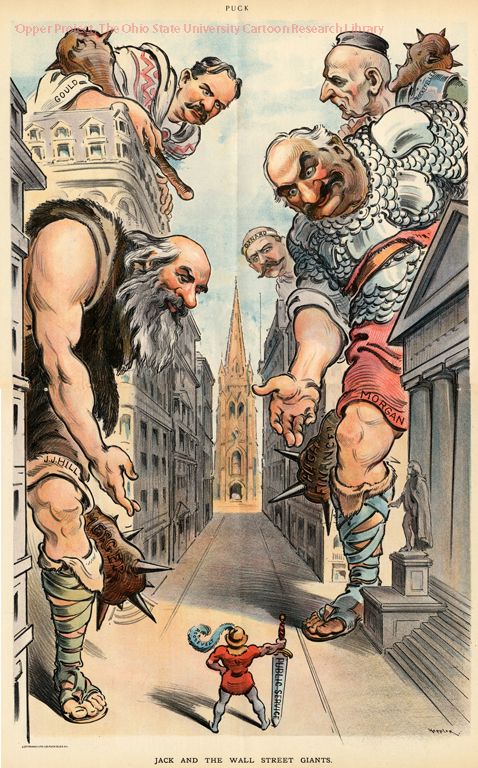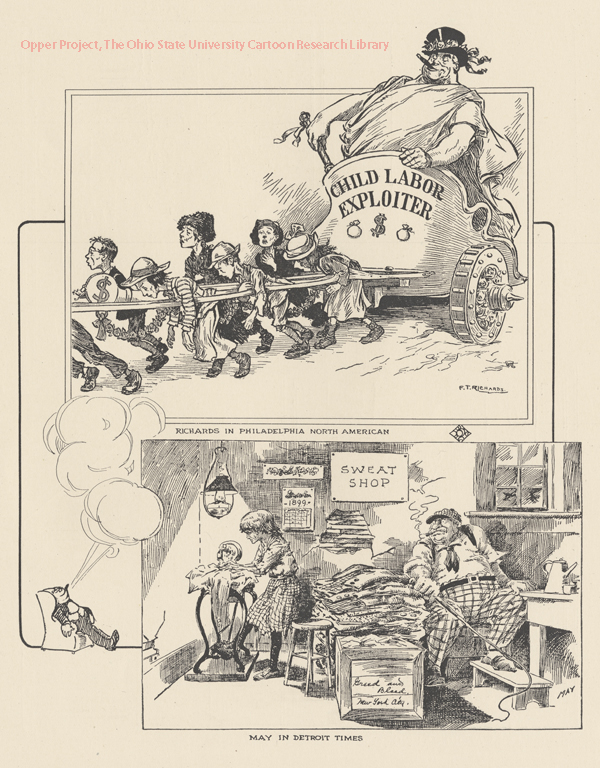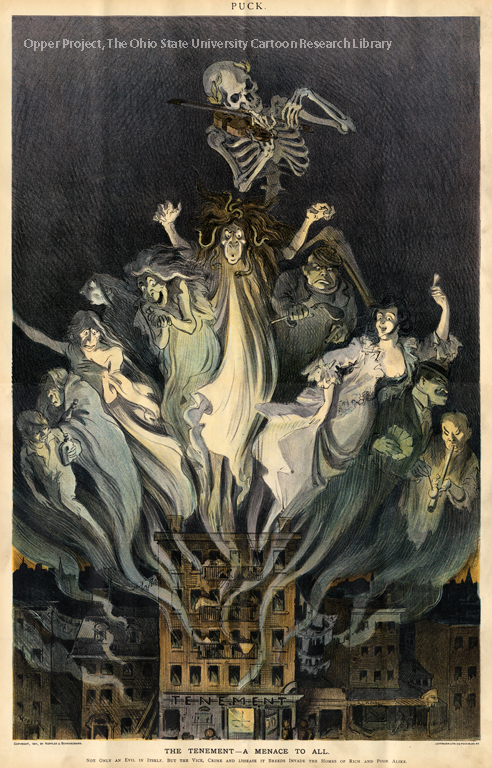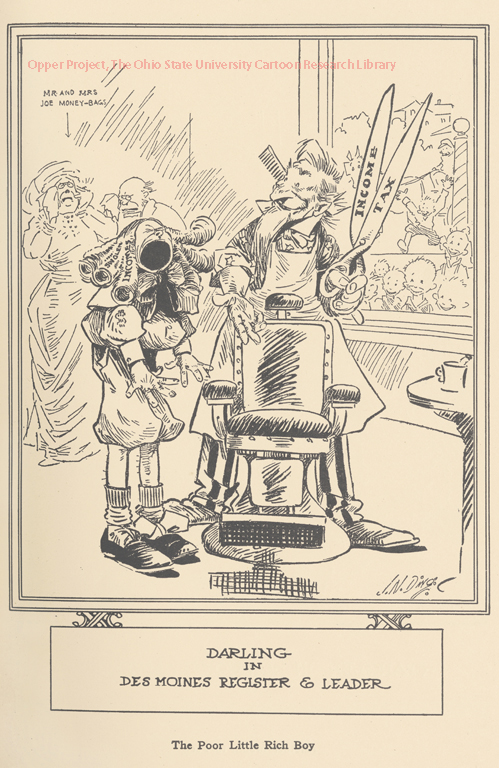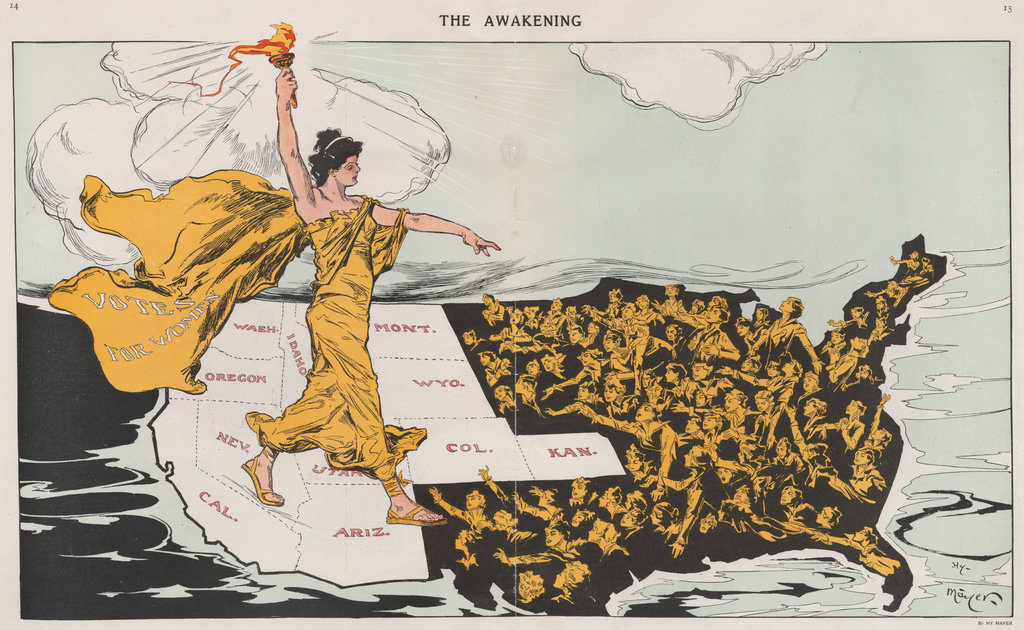
“Never in the history of the world was society in so terrific flux as it is right now, The swift changes in our industrial system are causing equally swift changes in our religious, political, and social structures. An unseen and fearful revolution is taking place in the fiber and structure of society. One can only dimly feel these things, but they are in the air, now, today.”
This quote is from The Iron Heel by Jack London, his 1908 dystopian novel in which a corporate oligarchy comes to rule the United States.
For our seminar discussion on the Progressive Era we will use resources from The American Yawp and The Billy Ireland Cartoon Library and Museum at Ohio State University. Read Chapter 20 – The Progressive Era and the primary sources attached to this chapter.
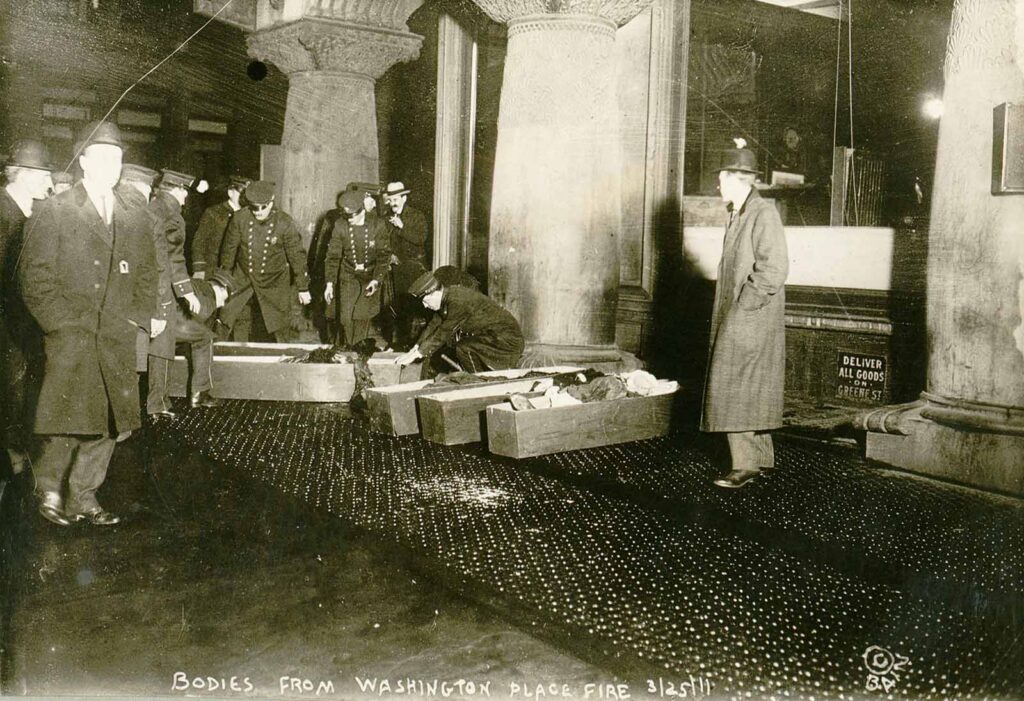
Seminar Discussion
The following questions will be used as “jumping off” points for our discussion on the Progressive Era. Use information and direct quotes from the chapter and primary sources in your responses/notes.
Post your responses/notes in our Seminar Discussion – Progressive Era forum in the Forums section of Laulima before Day 1 of our discussion. Check this forum for due dates!
- What ideas animated American progressives?
- What major reforms did American progressives pursue?
- How did American women shape the progressive movement?
- How did Jim Crow influence life for both white and black Americans?
- How do the similarities and differences between Booker T. Washington and W.E.B. Dubois capture major currents in African American thought?
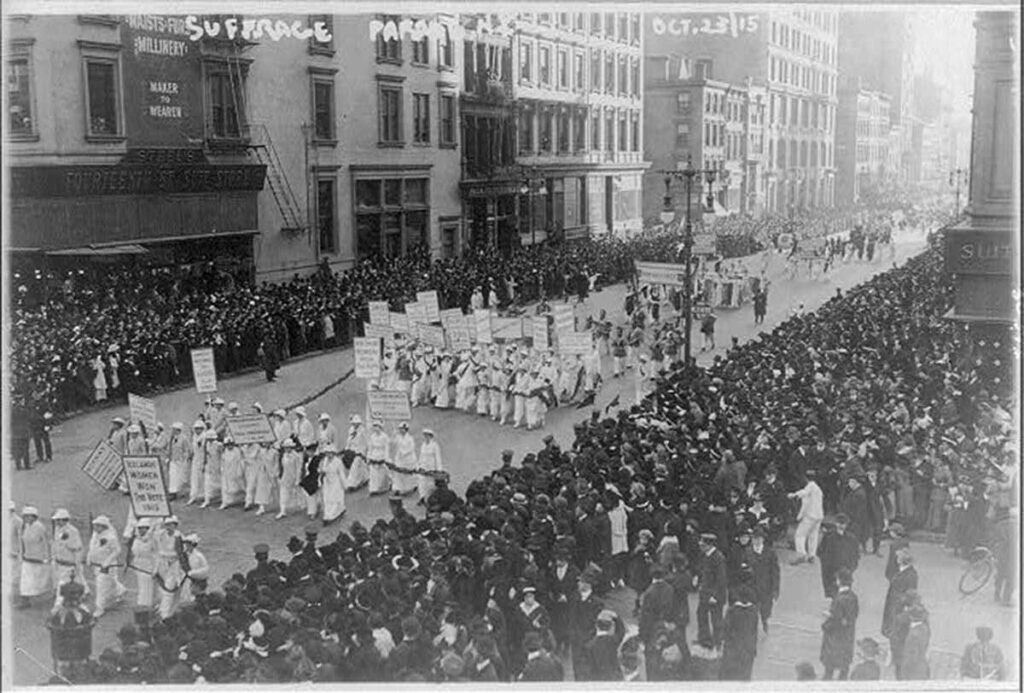

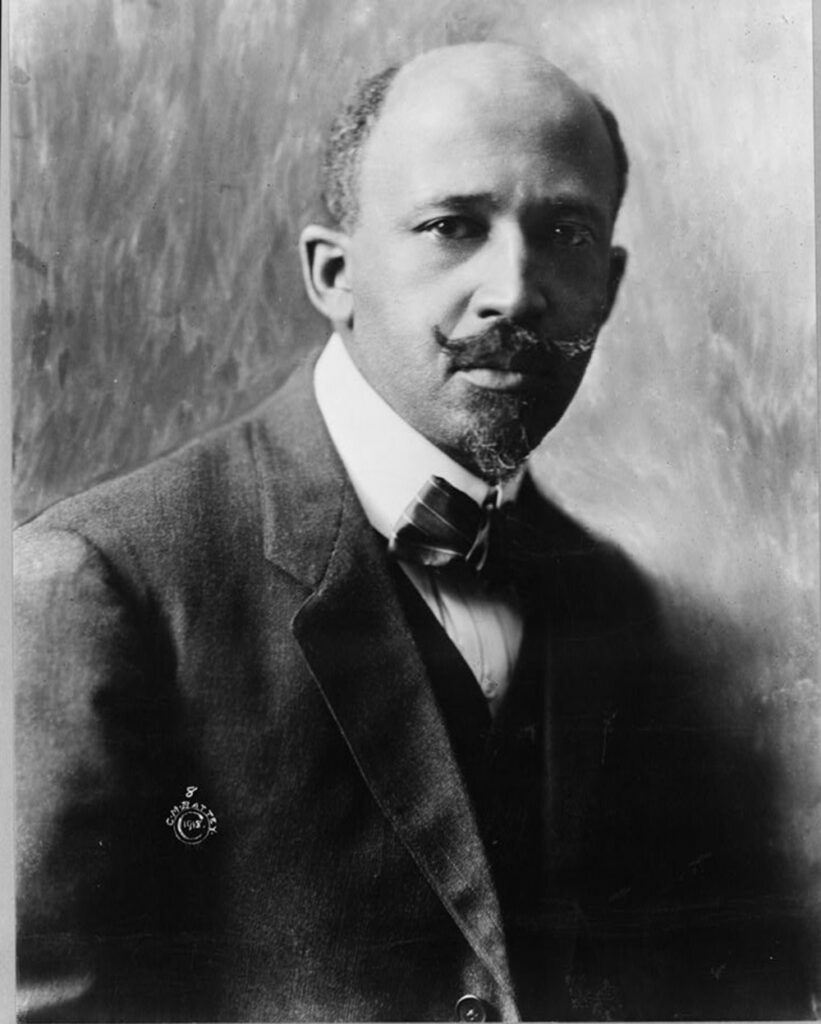
Political Cartoons Illustrating the Progressive Era
This part of our seminar will focus on the Progressive Era through the political cartoons created during this time period. Use the Cartoon Analysis Worksheet on each of the following political cartoons and be prepared to discuss in class.
Cartoon #1
Creator:
Joseph Keppler
Publication:
Puck, Vol. 56, No. 1402
Publication Date:
January 1904
Description:
Progressivism was a multifaceted effort by middle-class Americans to reform their country’s politics, economy, and society. Progressive reformers were active first at the local and state and then the national level. Their causes included public health, city planning, the prohibition of alcohol, the income tax, the regulation of big business, conservation, primary elections, and the popular election of United States senators, among others.
This cartoon re-tells the story of Jack and the Beanstalk with President Theodore Roosevelt as Jack confronting various “giants” of the American economy, including J.P. Morgan and Jay Gould.
Cartoon #2
Creator:
F.T. Richards
Publication:
Cartoons Vol. 3, No. 4
Publication Date:
April 1913
Description:
Progressivism was a multifaceted effort by middle-class Americans to reform their country’s politics, economy, and society. Progressive reformers were active first at the local and state and then the national level. Their causes included public health, city planning, the prohibition of alcohol, the income tax, the regulation of big business, conservation, primary elections, and the popular election of United States senators, among others.
One of the most prevalent of the Progressive reforms was to end child exploitation in the workplace. Industrialization had limited the economic opportunity of working in the home, so children who had to work to help support the family were forced to find outside employment. Many of these jobs were either dangerous or very difficult, and paid poorly.
Cartoon #3
Creator:
Joseph Keppler
Publication:
Puck vol. 49, no. 1254
Publication Date:
March 20, 1901
Description:
Progressivism was a multifaceted effort by middle-class Americans to reform their country’s politics, economy, and society. Progressive reformers were active first at the local and state and then the national level. Their causes included public health, city planning, the prohibition of alcohol, the income tax, the regulation of big business, conservation, primary elections, and the popular election of United States senators, among others.
A central goal of progressive urban reform was the elimination of tenements. Tenements were multi-story apartment buildings developed in the late 19th century to house growing populations, especially immigrants, in large cites across America. While they were an improvement in housing for many who lived in them, they were also overcrowded and unsanitary. Tenements were low cost housing used by people on the way up or the way down the economic ladder. The cartoon shows the type of problems associated with tenements. Progressives wanted to tear the tenements down to displace these civic evils.
Cartoon #4
Creator:
J.N. (Ding) Darling
Publication:
Cartoons Vol. 4, No. 5
Publication Date:
November 1913
Description:
Progressivism was a multifaceted effort by middle-class Americans to reform their country’s politics, economy, and society. Reformers regarded the progressive income tax, whereby those who have more money pay more in taxes, as a necessary reform to fund government programs and provide some measure of economic equality to a society whose industrial economy created vast fortunes in the last decades of the 1800s. The Supreme Court declared federal income taxes unconstitutional in 1896. The income tax remained popular with progressive Americans, however, and in 1909 Congress passed a constitutional amendment calling for a federal income tax. By 1913 the required number of states had ratified the measure, which became the16th amendment to the constitution.
Congress then passed an income tax law, and the president, progressive Democrat Woodrow Wilson, signed it into law. Initially the income tax only affected those with the highest earnings . Here, a young man with long curls (based on the then-popular fictional character Little Lord Fauntleroy) comes to Uncle Sam who is going to cut his “high income” hair. The younger, less affluent children have all gathered at the window to watch the spectacle. The income tax amendment passed amid some general concerns about the power of government, but the self-serving complaints of the rich were generally ignored at the time.
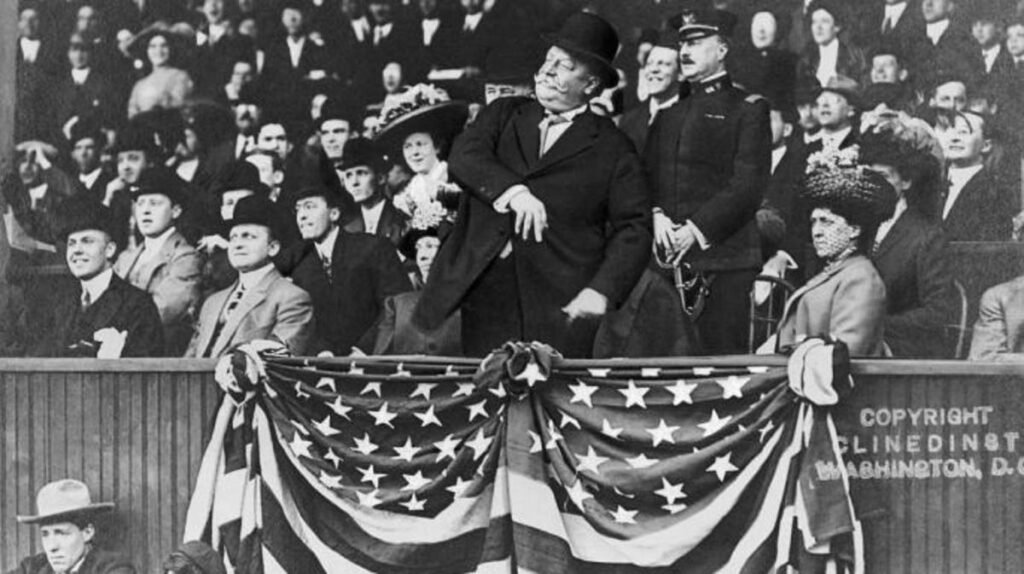
The man who arranged for the ceremony was Taft’s military aide, Major Archie Butt. Taft also threw out a ball on Opening Day of 1911, but he missed the occasion in 1912 because the Titanic had just sunk, and Butt was one of the passengers.

